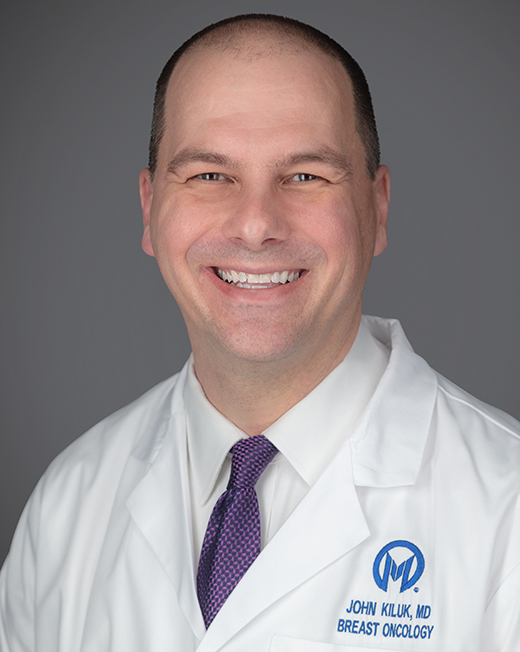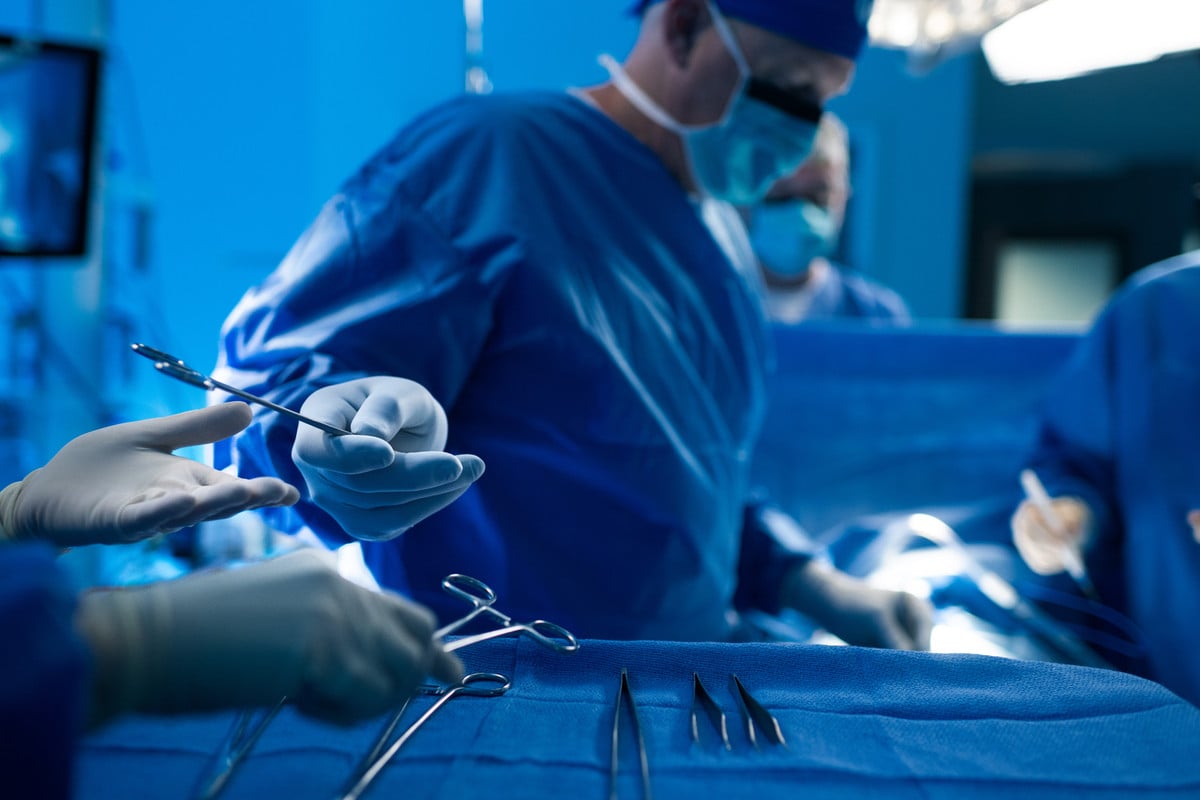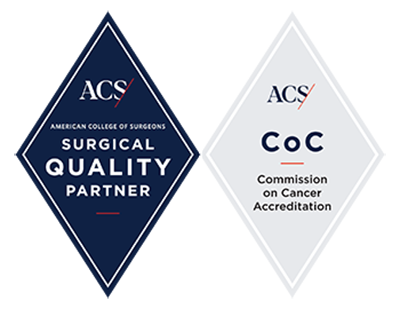Breast Cancer Surgery
Breast cancer originates in the cells of the breast, most often in the ducts (ductal carcinoma) or milk-producing lobules (lobular carcinoma). Although it is one of the most common cancers affecting women, it can also occur in men. Symptoms can include a breast lump, changes in breast shape or size, dimpling of breast skin or nipple discharge. Many tumors are found during a routine mammogram.
The diagnostic process for breast cancer usually involves a physical examination, imaging tests, such as breast ultrasound or magnetic resonance imaging (MRI), and biopsy. Treatment can vary based on factors such as the type and stage of the tumor and the patient’s overall health and preferences. Common options include surgery, radiation therapy, chemotherapy, hormone therapy and immunotherapy. Early detection and advances in treatment continue to improve breast cancer outcomes.
Why is breast cancer surgery performed?
Surgery is often a key component of a breast cancer treatment plan. In addition to removing as much cancerous tissue as possible, the goal of surgery may be to assess the extent of cancer spread or to alleviate the symptoms of an inoperable breast tumor. Additionally, after breast cancer surgery, a reconstructive procedure may be considered to restore the size and shape of the breast.

Who is a good candidate for breast cancer surgery?
Typically, a good candidate for breast cancer surgery has localized breast cancer, where the tumor is confined to the breast and possibly nearby lymph nodes but has not spread to distant organs or tissues. The patient should generally be in good overall health and able to tolerate surgery. Before suggesting breast cancer surgery, a physician will thoroughly evaluate multiple factors, such as the size and location of the tumor and the patient’s age and preferences.
How to prepare for breast cancer surgery
To prepare for breast cancer surgery, the patient should undergo all recommended preoperative evaluations, such as imaging tests and blood work. During a consultation, the surgical team will explain the procedure and anesthesia and advise of any necessary medication and lifestyle adjustments that should be made beforehand. Finally, to streamline the surgical experience, the patient should arrange transportation to and from the hospital as well as any assistance they might need at home during recovery.
What happens during breast cancer surgery?
There are several different approaches to breast cancer surgery, including:
Lumpectomy
Also known as breast-conserving surgery and partial mastectomy, lumpectomy may be considered for treating a small breast tumor that can be removed in its entirety without affecting more than one-third of the breast. The goal is to eliminate the cancer while preserving as much healthy breast tissue as possible.Oncoplastic surgery combines tumor removal with cosmetic breast reconstruction.
Usually, lumpectomy is followed by radiation therapy to destroy any microscopic cancer cells that remain in the breast tissue and help prevent a recurrence.


Florida's Top Choice for Breast Cancer Surgery
Schedule an AppointmentMastectomy
Mastectomy involves removing the breast that contains the tumor. The most common approach is total mastectomy, which involves removing all breast tissue, including the nipple and areola, the breast skin and the tissues that cover the chest muscles.
Another type of mastectomy is modified radical mastectomy, which involves removing all breast tissue, including the nipple and areola, the breast skin, the tissues that cover the chest muscles and most of the axillary lymph nodes in the armpit.
When possible, some women may opt for nipple-sparing or skin-sparing mastectomy. Nipple-sparing mastectomy involves removing all breast tissue but leaving the nipple, areola and breast skin intact. Skin-sparing mastectomy involves removing all breast tissue and the nipple and areola but leaving the breast skin intact. After either type of mastectomy, the breast can immediately be reconstructed with tissue expanders, breast implants or tissue flaps, which can produce a cosmetically pleasing result.
Unilateral or single mastectomy involves one breast, while bilateral or double mastectomy involves both breasts. The latter approach may be considered for treating invasive ductal carcinoma in both breasts. It may also be a good option for a patient at heightened risk of developing a second breast cancer due to a strong family history or an inherited gene mutation linked to breast cancer, such as a breast cancer gene 1 (BRCA1) or breast cancer gene 2 (BRCA2) mutation.
The decision to undergo mastectomy is highly personal. For peace of mind, some patients opt for bilateral mastectomy even though unilateral mastectomy is an option. Likewise, some patients who are at high risk of developing breast cancer opt for prophylactic mastectomy before any signs of a tumor develop.
ACS Surgical Quality Partner for 30+ Years
Continuously Accredited by the American College of Surgeons Commission on Cancer since 1989 for our commitment to providing comprehensive, high-quality and multispecialty patient-centered care.
Sentinel node mapping and biopsy
To determine whether cancer has spread beyond the breast, the surgeon may perform sentinel node mapping and biopsy during lumpectomy or mastectomy. This procedure involves injecting a harmless dye or a weak radioactive solution near the nipple of the affected breast. The surgeon will then use a special device to observe the flow of lymph drainage from the breast.
After identifying the sentinel lymph node(s), which would most likely be the first tissues affected by breast cancer spread, the surgeon will make a small incision in the armpit and remove the node(s) for microscopic evaluation by a pathologist. If the pathologist identifies cancerous cells in the sentinel node(s), a follow-up procedure known as axillary node dissection may be considered to remove additional lymph nodes.
What are the risks and possible complications of breast cancer surgery?
Breast cancer surgery, while generally safe and effective, carries some risks and potential complications like any surgery. These may include infection at the incision site, excess bleeding and reaction to anesthesia. Some patients might experience temporary swelling, bruising or changes in sensation around the surgical area, which usually improve over time. There is also a small risk of fluid accumulation (seroma) that may need to be drained. With expert surgical care and attentive postoperative care, these risks can be minimized, and most patients recover well from breast cancer surgery.
What to expect during recovery from breast cancer surgery
After breast cancer surgery, the patient can expect an initial period of rest and healing, typically involving a hospital stay of one or two days depending on the type of surgery performed. There, the patient will receive pain management and instructions on how to care for the surgical site, including how to manage the dressings and drains if any. Mild discomfort, swelling and bruising are common and usually improve with time. To maintain mobility and prevent stiffness, the patient will be encouraged to perform gentle arm exercises. During regular follow-up appointments, the surgical team will monitor the patient’s progress and remove any stitches and drains. Most patients gradually return to their normal activities in a few weeks and recover fully in a few months.
How effective is breast cancer surgery?
Breast cancer surgery can be effective, particularly when the tumor is detected early and localized. A cornerstone of breast cancer treatment, surgery is often combined with other options, such as radiation therapy, chemotherapy or hormone therapy, for heightened effectiveness.
Benefit from world-class care at Moffitt Cancer Center
The board-certified, fellowship-trained breast surgeons in Moffitt’s Don & Erika Wallace Comprehensive Breast Program are dedicated to helping our patients fight breast cancer by performing innovative surgical techniques and state-of-the-art procedures. Moffitt has earned an outstanding reputation as a leader in complex breast cancer surgery, and our team has extensive experience and highly refined expertise. We are also continually evaluating promising new treatment options through our robust portfolio of clinical trials.
If you would like to learn more about breast cancer surgery, you can request an appointment with a specialist at Moffitt by calling 1-888-663-3488 or submitting a new patient registration form online. We do not require referrals.
Helpful Links:
Surgery

